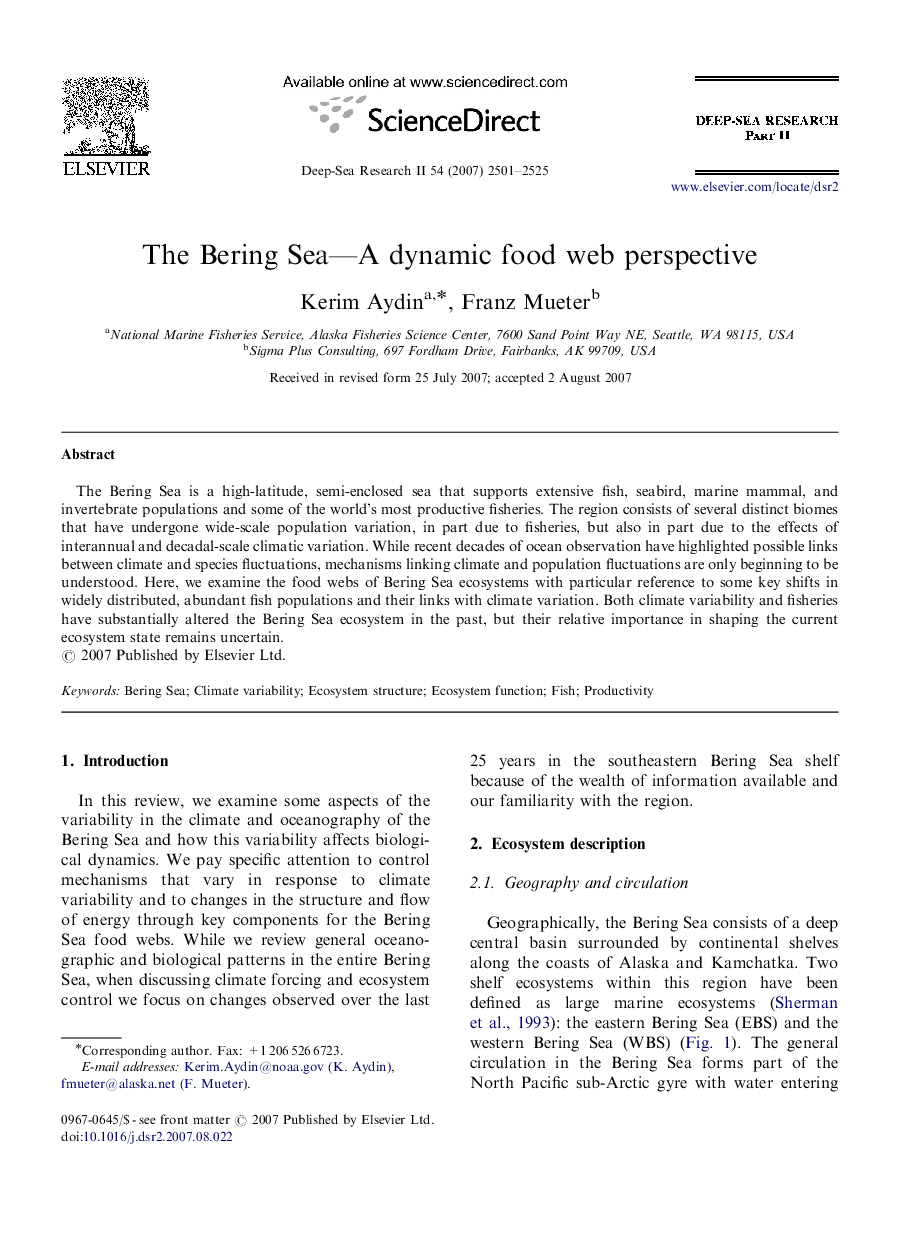| Article ID | Journal | Published Year | Pages | File Type |
|---|---|---|---|---|
| 4538170 | Deep Sea Research Part II: Topical Studies in Oceanography | 2007 | 25 Pages |
The Bering Sea is a high-latitude, semi-enclosed sea that supports extensive fish, seabird, marine mammal, and invertebrate populations and some of the world's most productive fisheries. The region consists of several distinct biomes that have undergone wide-scale population variation, in part due to fisheries, but also in part due to the effects of interannual and decadal-scale climatic variation. While recent decades of ocean observation have highlighted possible links between climate and species fluctuations, mechanisms linking climate and population fluctuations are only beginning to be understood. Here, we examine the food webs of Bering Sea ecosystems with particular reference to some key shifts in widely distributed, abundant fish populations and their links with climate variation. Both climate variability and fisheries have substantially altered the Bering Sea ecosystem in the past, but their relative importance in shaping the current ecosystem state remains uncertain.
